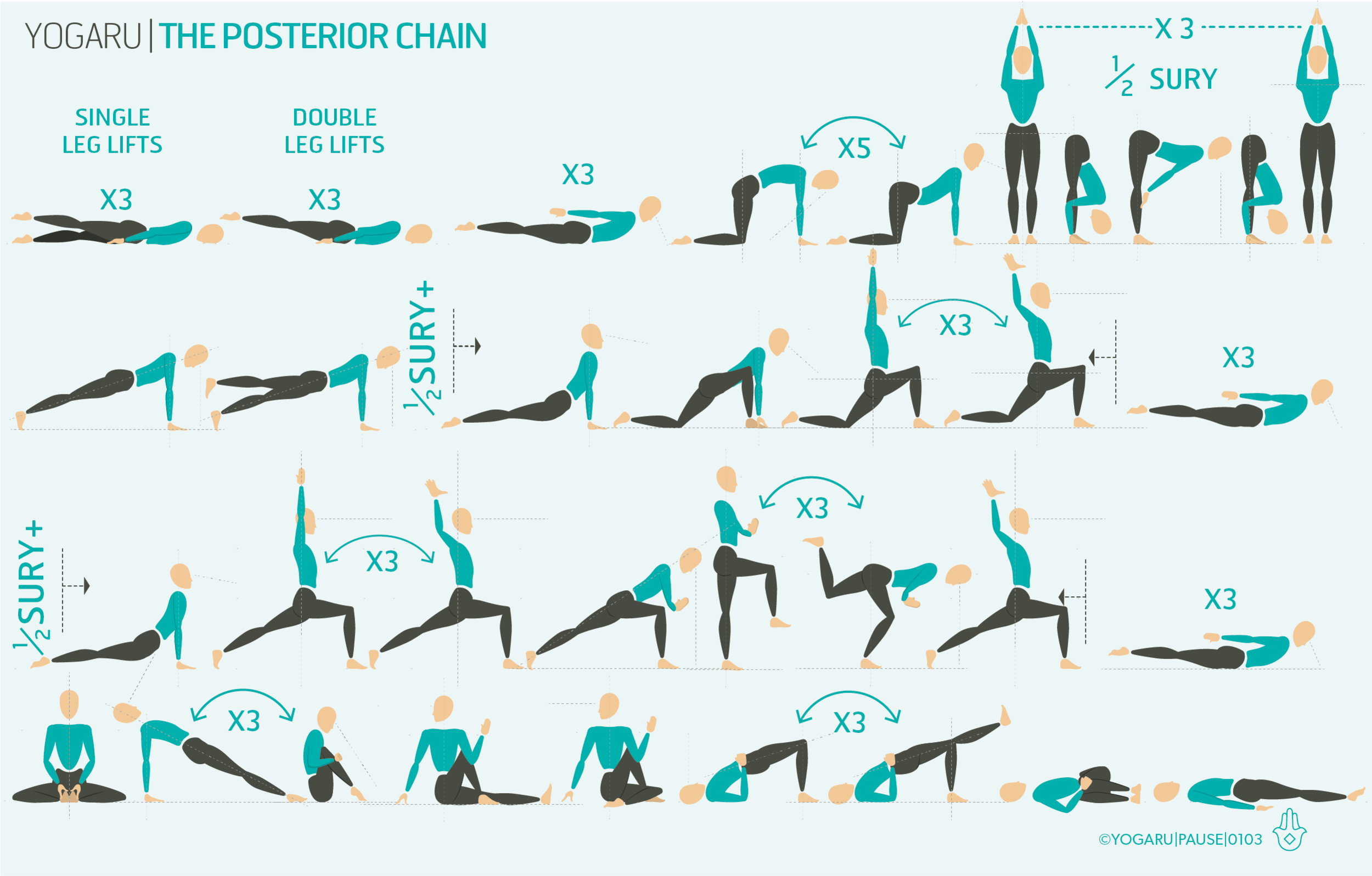THREE DIMENSIONAL BEINGS
We are very conscious of our front bodies. It is what looks back at us in the mirror and primarily what we communicate with too – it’s much harder to read a person from their posterior! We concentrate most of our movement patterns on our front body too and the back body gets ignored, until it makes itself heard through shoulder, back, glute or hamstring pain or injuries. ‘The posterior chain’ refers to the whole back body, starting from the back of the heel, the calves, hamstrings, glutes, lower back (lumbar spine), upper back (thoracic spine), the neck (cervical spine) and end just under the back curve of the skull. This chain of muscles are designed to hold us upright. If they are weak they can become fatigued more easily and we collapse and curl forward in the front body. The posterior chain become weakened from lack of use or from long periods of sitting where parts are in a static slight stretch and there is very little strengthening and stabilising. A strong posterior chain protects the back and allows more freer fluid movement.
FORWARD BENDS VS BACKBENDS
In our practice we naturally come into more forward bend poses than backbends. In a Classic Sun Salutation you will take six forward bends (where the upper body is moving towards the lower body) and one backbend (where the upper body is moving away from the lower body) on each side which means twelve forward bends to two backbends to a full round of a Classic Sun Salutation. As with everything in life and especially in movement balance is best. Adding more poses that actively strengthen all or part of the posterior chain and will ignite the muscles of the back body.
EXPLORING THE POSTERIOR CHAIN IN YOUR PRACTICE
This sequence intermittently adds poses that will strengthen your whole back body. Salabhasana/Locust is one of my favourite poses for strengthening the posterior chain from the heels to the top of your neck. Ardha Uttanasana/Half Forward Fold is also very easy to add into your sequences and will help to counteract long periods of sitting and improve posture by strengthening the back. To concentrate the actions into the back strength keep your knees slightly bent and press your hands strongly into the tops of your knees to reach your chest forward and up, taking care not to bring too much flexion into the back of the neck.
ALIGNMENT CUES
The sequence starts lying prone and connecting with all the muscle groups of your posterior chain. The peak pose is Urdhva Mukha Svanasana/Upward Facing Dog. When you find yourself in this pose lift up with the back body and work on taking as much weight off your hands through the strength of your back as you can. Press into the tps of your feet and reach them back as you hug to the midline and lift through the core to protect your lower back. It is not a pose to stay in for too long, but you can add a few more of them in between mini flows if you are enjoying finding your back body strength.
From Chaturanga Dandasana, inhale, reach your sternum forward and up, roll over your toes onto the tops of the feet, straighten your arms, hands either side of your ribs.
Press into your hands and tops of feet, lift chest and hips up. Broaden through the collarbones, firm your shoulder blades onto your back.
Reach your toes back, firm your legs, hug your outer hip to the midline
Pull your hands back, draw your sternum forward and up, draw your navel towards your spine. Gaze forward or arch your head back and gaze up.
To save the images for personal use click and hold down the image until the ‘save image’ option appears; on Mac hold down ‘control’ and click the image to get the option box; on PC right click on the image to get the option box. Scroll down in the ‘option box’ and click ‘save image’.
Ruth Delahunty Yogaru

